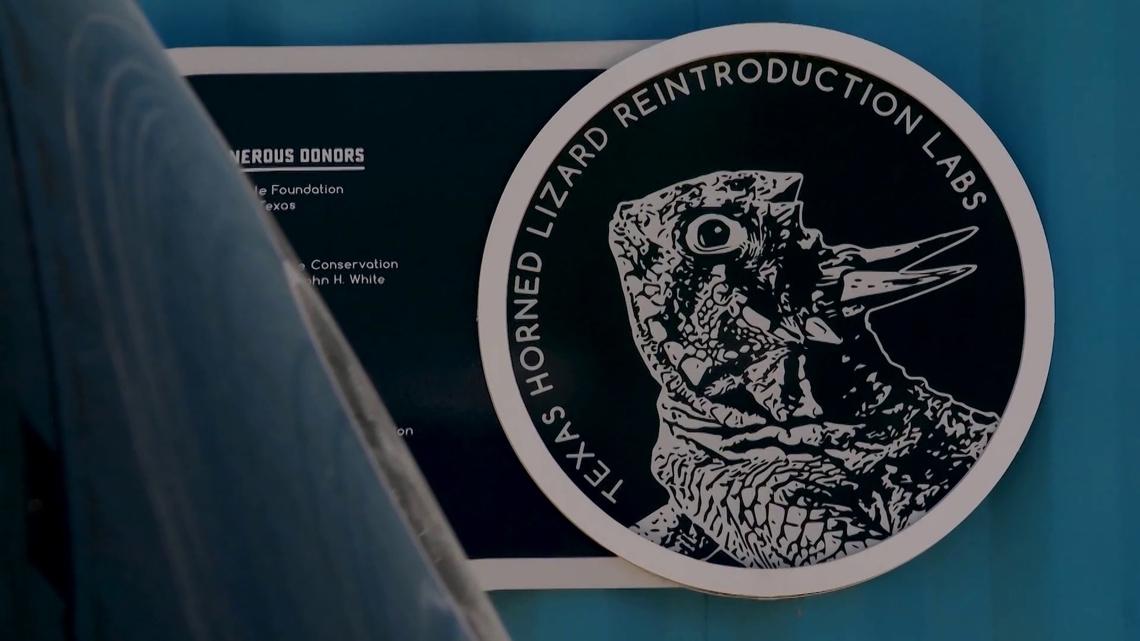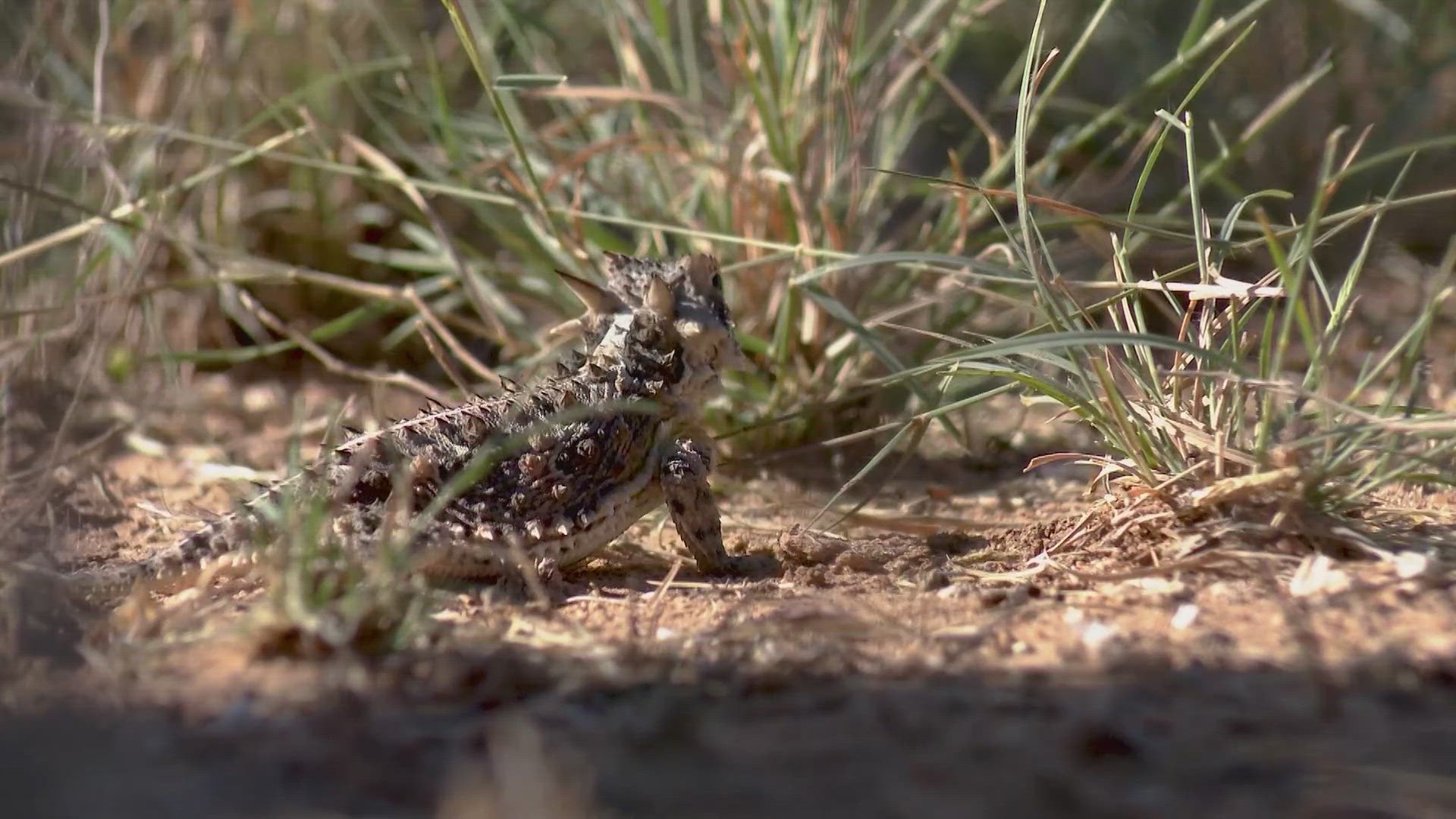KENEDY, Texas — "We couldn't wait to get home, change our clothes and go play with the Horned Toads," says Lisa Yaklin.
She grew up in Kenedy, Texas... now designated as the 'Horned Toad Capital of the World!'


The problem is, you can look as hard as you want, and it will be hard to find one now.
Experts estimate the Horned Lizard has disappeared from as much as 30% of its natural habitat. Agricultural practices, encroachment by humans and the elimination of its primary food source, red ants, are contributing factors to the declining numbers.
"We like to call it a 'Lizard factory,'" says Andy Gluesenkamp, the Director for Conservation and Research at San Antonio Zoo.


The zoo is operating a program to capture, breed, then raise and release baby Horned Lizards. They have collected dozens of lizards, from every corner of the state, bred them and are now producing baby Horned Lizards.
The Horned Lizard Reintroduction Project is funded, totally through donations. It costs a little more than $100,000 per year. Much of that money goes to providing food for the adult and baby lizards, primarily red ants! It also pays for the aquarium enclosures, incubators and heat lamps to keep the lizards warm.
Gluesenkamp says "They're very demanding!" A female will lay a clutch of a several dozen eggs, which then go into an incubator for roughly two months before they hatch. Once they do, they are then placed together with like-sized babies and pampered for about 3-4 months before they are released into the wild.
Ranchers are excited to be a part of the program. "I can't imagine why not," Gluesenkamp says about releasing the lizards. "They are an iconic piece of Texas."
So far the program appears to be working. Gluesenkamp says they have already found scat (lizard poop) from the offspring of lizards the project has released.
There have been between 250-300 lizards released, and more help is on the way. The Dallas and Fort Worth zoos have similar programs, as does the Miami Zoo and, of course, Texas Christian University... who's mascot is the Horned Frog.
So the effort to ensure this iconic piece of Texas will always be here, is indeed thriving.



